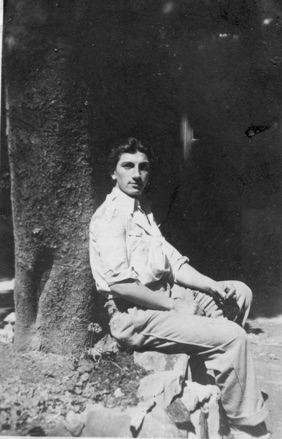
Pierre Bosco, around 1929
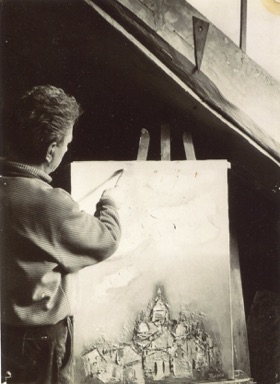
His father envisioned a different path for him, hoping Pietro would become an officer in the merchant marine and thus encouraged him to study to become a telegraph operator. Pietro enlisted for military service in Sardinia as a telegraph officer. However, his lack of enthusiasm for his studies and his growing passion for painting led him to Genoa and later Rome, where he trained as a painting conservator. There, he mastered the techniques of the great art masters. His early works displayed a natural sensitivity to color and a distinct ability to add volume to images, which would become his artistic signature.
Upon discovering the works of Cézanne, Pissarro, Gauguin, and Rouault, Pierre became convinced that his future lay in Paris, where the bohemian lifestyle attracted artists and sculptors from around the world.
At the age of twenty-two, Pierre Bosco decided to leave his native Italy and relocate to Saint-Germain-en-Laye, where he diligently attended schools and painting workshops in the French capital. There, he met his neighbor Maurice Denis and soon became acquainted with prominent artists such as Pierre Bonnard, André Derain, Aristide Maillol, Edouard Vuillard, and his brother-in-law, the painter Nabi Ker-Xavier Roussel. Roussel, in particular, became a significant spiritual mentor to Bosco and played a crucial role in helping him discover his own artistic identity. This connection profoundly transformed Bosco’s artistic journey.
Naturally independent and disinterested in social conventions, Bosco preferred to distance himself from prevailing artistic trends and styles. While he was not averse to contemporary influences, he resisted having them imposed upon him.
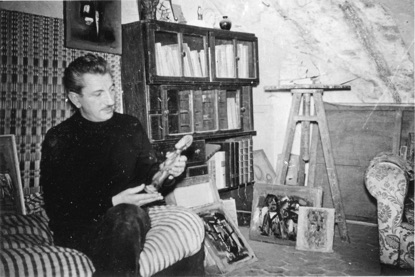
Pierre Bosco finally achieved success and recognition in the 1950s. In Saint-Germain-en-Laye, he founded the Independent Painters' Association (API), which included artists such as Jean Souverbie, Roger Chastel, the Vera brothers, Clave, Gomery, and Edoardo Samartino. After participating in the first Biennale del Mare in Genoa, he showcased his work at the Galerie Vivet in Paris in 1952.
Bosco in his studio in Saint-Germain en Laye
During this period, the French press described his paintings as possessing "bewitching magic." At this exhibition, Bosco met poet Guy Lavaud, who praised him as a powerful painter and visionary. Bosco was selected for the prestigious Otto Friez Prize at the Museum of Decorative Arts in Paris for three consecutive years.
In 1955, the Gallery M. Forein in Faubourg Saint-Honoré invited him to participate in an abstract art exhibition. After careful consideration, Bosco declined, noting that while he had explored pure abstraction, it often led him to create similar works within that style. For him, abstract art seemed like "an easy way to be confined by a system." Nevertheless, abstract elements would continue to feature in his work, particularly in his works on paper.
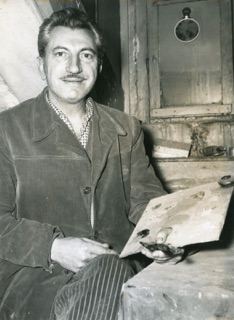
By 1957, Pierre Bosco had gained considerable recognition among the affluent elite of Paris. He was featured in numerous flattering articles written by prominent figures such as Pierre Seghers, Jean Cocteau, and Marcel Sauvage—who even dedicated a poem to him—as well as the French poet and novelist Henri Bosco and the journalist and writer Louis Nucéra.
Bosco's artwork was now ranked alongside the most celebrated names in contemporary painting, including Chagall, Braque, Picasso, and Matisse. This newfound prominence opened up various opportunities for him: he began participating in radio shows, and his paintings were acquired for permanent museum collections. Additionally, once introduced to the American Jewish community, Bosco attracted interest from financiers, lawyers, actors, and film producers.
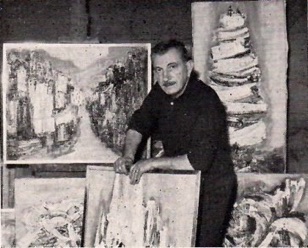
That same year, the Marquis de Langle, an art collector, organized an exhibition at the Galerie Di Meo in Paris, attracting writers, diplomats, and high-ranking officials. During this event, Bosco met Royal Highness Prince of Greece and the Duke of Broglie. In 1960, Bosco married Madeleine Poire, and they traveled to New York for their honeymoon and to attend a major exhibition at the Norval Gallery, which drew all his usual collectors. The New York Herald Tribune praised the event, and thanks to this success, Bosco extended his honeymoon to the Northeastern United States. Upon returning from the U.S., the Athénée Museum in Geneva held a major exhibition of his work from January 28 to February 16, 1961. This year also saw the birth of his first son, Pierre Luca.
Bosco’s paintings attracted interest from private collectors, including Joseph H. Hirshhorn, a wealthy American industrialist and art collector. His works were also acquired by celebrities such as Kirk Douglas (who bought seven paintings, including Harlequin and Regatta), Robert Mitchum, Jack Palance, Lord Beaverbrook (a close friend of Sir Winston Churchill), former French President Georges Pompidou, as well as various singers and sports figures.
In 1959, Bosco met Yves Thomas, the owner of the gallery La Belle Gabrielle near Place du Tertre in Montmartre, and they quickly became friends. This relationship resulted in a tacit agreement for a 30-year collaboration, during which Bosco committed to producing four paintings per month on popular themes such as cathedrals, cockfights, cyclists, and horse races.
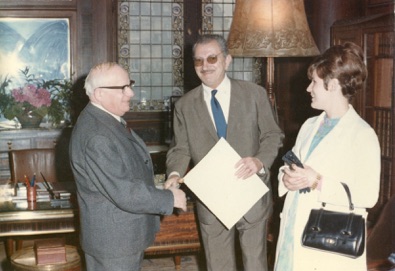
Bosco is awarded the Silver Medal of the city of Paris
The new decade began with significant recognition for Pierre Bosco, marked by a group exhibition at the Palais de Chaillot in Paris centered on the theme of "Jesus Christ." This exhibition garnered a glowing review in La Croix and led to several solo shows in Metz, Paris (at the Capangela and La Belle Gabrielle galleries), Versailles (Galerie Grand Siècle), Cannes (Galerie of European Painters), and Denmark (Schack Gallery in Tordenskjoldsgade).
By this time, Bosco had achieved international renown. In 1979, a traveling exhibition of 38 paintings and 10 gouaches, predominantly featuring sports themes, enjoyed a triumphant success in Dallas, Houston, and San Francisco. In 1981, Bosco traveled to Ireland, Rhodes, the United States, and Mexico, where he was particularly inspired by the archaeological richness and cultural diversity, which fueled his creativity and led to the development of new ideas and artistic forms.
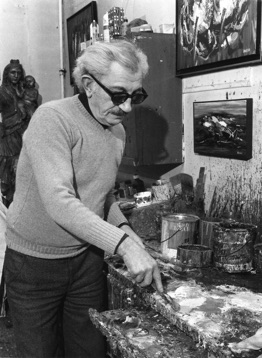
In early 1986, Bosco created a mural titled Car Race in the lobby of the Bendix Research Plant in Drancy. Later that year, in the fall, he showcased four paintings at the Hippodrome de Longchamp during the prestigious Prix de l'Arc de Triomphe horse race.
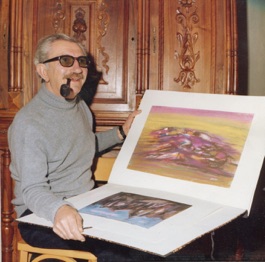
However, in the summer of 1988, he suffered a serious accident that left him in a coma. After being hospitalized for two months, he recovered enough to hold a solo exhibition in November at the Château de Maisons-Laffitte. This exhibition featured 30 paintings, 24 gouaches, and pastels representing over a quarter-century of his work, attracting nearly 300 attendees.
Pierre Bosco passed away on March 3, 1993, at the age of 83, and was buried at the Saint-Germain-en-Laye Cemetery. Throughout his prolific career, Bosco created more than 6,000 paintings, along with numerous works on paper, including pastels, gouaches, watercolors, and drawings. His art holds a special place among collectors in America and Europe, especially in France and Italy, as well as in Scandinavian countries. His works are also part of the permanent collections of several museums, including the Museum of the City of Paris, the Tel Aviv Museum (Israel), the Caramulo Museum (Portugal), the Beaverbrook Art Gallery (New Brunswick, Canada), and in the United States, the Toledo Museum of Art and the Hirshhorn Museum and Sculpture Garden in Washington, D.C.
